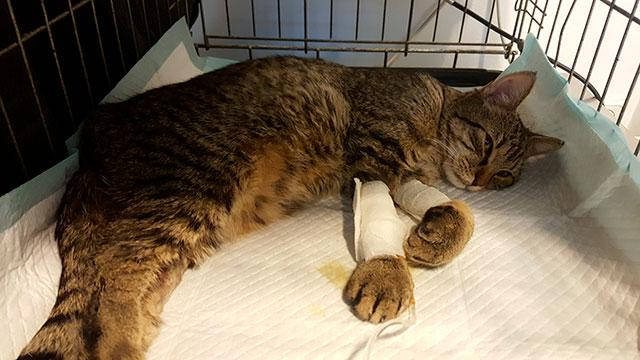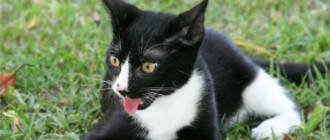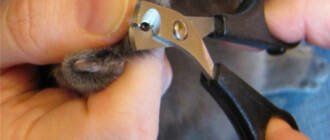The causative agent of distemper is parvovirus from the group Parvoviridae, which affects healthy cats through contact with a carrier or infected surface, bite of blood-sucking parasites or intrauterine.

- Feline distemper – routes of transmission and incubation period, symptoms, diagnosis, treatment and disinfection
- Panleukopenia virus in animals
- Ways of cat distemper infection
- Risk group
- Incubation period
- Forms of Panleukopenia
- Lightning
- Acute
- Subacute
- Ways of contracting distemper
- The first symptoms of distemper
- Prevention
- Diagnosis of distemper
- Care at home
- Diagnosis
- Diagnostic methods
- Differential diagnoses
- Treatment and prognosis
- Caring for the cat during the illness
- Prevention of the disease
Feline distemper – routes of transmission and incubation period, symptoms, diagnosis, treatment and disinfection
There are legends that cats have 9 lives, in addition, many believe that these animals land on their paws when they fall. This kind of assertion is justified, because the pets are distinguished by endurance, vitality. It is worth noting that even these animals are not able to endure some diseases – one of the most dangerous is the feline distemper or panleukopenia.
This is a very contagious viral disease, also known as infectious parvovirus enteritis or panleukopenia. When infected, the number of all types of leukocytes in the bloodstream is sharply reduced, the intestinal epithelium is affected, and generalized infection affects the lymphatic system. Panleukopenia occurs more often in kittens – the immature body is more susceptible to the virus. The most dangerous time is spring and summer, when the animals are breeding. Chumka in cats shows a high mortality rate, so it is important to start treatment in time – when the first signs appear.
Panleukopenia virus in animals
Feline distemper is caused by the lesion of the animal's body by parvovirus, whose name in Latin sounds like this – Virus panleukopenia feline (FPV). The virus retains its virulence in the external environment for up to one year, does not decompose if heated to 60° C for one hour, does not respond to changes in acidity between pH 3.0 and 9.0, is not afraid of frost, and withstands pepsin, trypsin, diethyl ether and chloroform – because of this remarkable resistance the pathogen can easily infect new victims.
Sick cats and virus carriers are sources of the deadly disease. The parvovirus is excreted with feces (faeces, urine) or saliva. There are several ways of contracting panleukopenia:
- By oral contact. The virus can enter the oral cavity with the saliva. Most often, this occurs while drinking water or eating food infected with viral particles from a virus-carrying or diseased animal.
- The airborne pathway. A healthy animal gets panleukopenia by being in close proximity to a sick animal.
- The contact way. Infection occurs through the personal belongings, clothing or shoes of the owner of the furry pet who has been in contact with a carrier cat. In addition, the parvovirus persists for a year on toilet trays, harnesses, bowls and toys.
- Intrauterine. The virus passes unimpeded through the placental barrier and enters the fetus. Kittens infected at an early stage of pregnancy die (decompose inside, mummified) before birth or die 1 to 2 days after birth. Babies infected at a later stage often have a congenital underdevelopment of the cerebellum.
- Vector-borne Pathogen of Panleukopenia is transmitted by blood-sucking parasites such as ticks, fleas or bedbugs.
Almost all members of the feline family can be infected with parvovirus: tigers, leopards, cheetahs. Among domestic animals distemper is a widespread disease, to which unvaccinated kittens under one year old and cats older than 6-8 years are more exposed: young animals are susceptible to the disease due to underdeveloped immunity, and elderly pets with age lose the ability to resist various viruses, because the immune system becomes weaker.
Ways of cat distemper infection
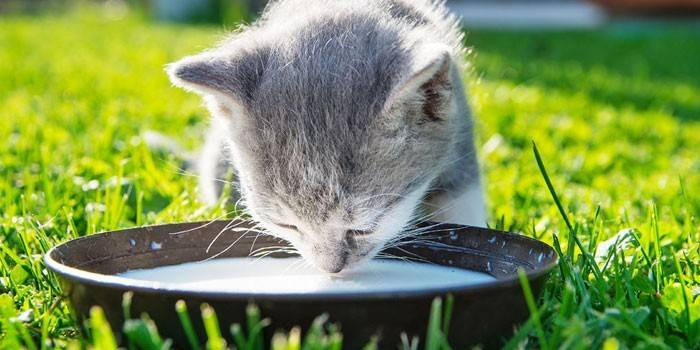
Due to the fact that the cat panleukopenia virus is able to adapt even to adverse environmental conditions, it can rightfully be called extremely resistant. It can infect cats of any breed and any age in different ways:
The virus is able to circulate through the bloodstream across the placental barrier. As a result, the cubs may be born dead or with developmental abnormalities.
2. Contact – by contact with an infected personal object or surface, as well as a sick cat
If a healthy cat e.g. eats or drinks from the bowl of an infected cat, the virus will pass to it through the thing. The same principle of transmission works through cots, litter trays, and toys.
Another way to contract plague in cats is directly through the host, if he brings the panleukopenia virus on his shoes or on his hands, and if the animal communicates with an infected cat.
3. oral – through bodily fluid (vomit, saliva, mucosal secretions) from an infected to a healthy cat
The route of infection is close to the contact route. If a cat, for example, drinks from a puddle or finds infected prey and tastes it, he will definitely contract the plague.
Risk group
No member of the feline family is immune from panleukopenia. Neither breed nor place of habitat (domestic, outdoor) plays a role. At the same time it was noted that adults become ill less often.
Important: The main risk group are all animals that were not vaccinated in time. Even an older but vaccinated cat can handle the plague virus faster than an unvaccinated cat.
Incubation period
On average, the incubation period lasts from 2 to 14 days. If infection occurred by contact, then about 5 days.
During this time, the parvovirus can be in the body without showing any signs. Once the incubation period ends, it begins to actively reproduce.
Forms of Panleukopenia
Plague is a disease that affects all major body systems. The development of the disease and the severity of symptoms depend on immunity, heredity and the presence of vaccination.
Lightning
The ultra-acute or lightning form most often occurs in kittens in the first 3 months of life, and sometimes in older animals with weakened immunity. It develops very rapidly, so the pet may die within 2-3 hours of the onset of manifestation.
The condition worsens every hour. First, the animal hides in dark corners of the house, shuddering at loud noises. Then its temperature rises sharply.
Kittens lose their sucking reflex. The mucous membrane of the mouth begins to turn blue, and vomiting may be painful. Kittens are lost in space, unable to go to the litter box on their own.
Acute
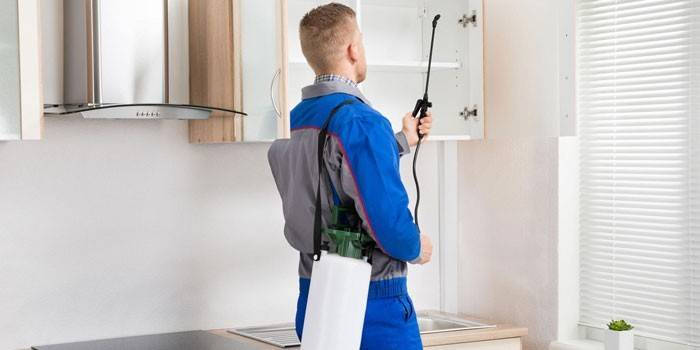
Acute panleukopenia is characteristic of adult unvaccinated cats. The disease begins to develop within 5-7 days.
The first dangerous signal is a deterioration in the quality of the coat. The cat stops licking, becomes weak and apathetic. Most of the time it sleeps or just lies down. Because of throat cramps and abdominal pain, she refuses food and water.
She then has a rapid rise in temperature, diarrhea and vomiting with blood or foam, and inflamed lymph nodes. There may be inflammation or pustules on the body.
Subacute
In this form, distemper occurs in vaccinated cats with strong immunity. The clinical picture is characterized by a long incubation period of 1-2 weeks and typical for the acute form, but blurred symptoms. For this reason, it is very difficult for the owner to realize that his pet is ill.
With close observation of the subacute form of panleukopenia, the following symptoms are noted:
First, the cat is noticed to have stool problems. She begins to eat less, but she does not refuse to drink. Then the temperature rises without fever.
Ways of contracting distemper
To become infected with distemper can both domestic and outdoor cats. In this case, contact with sick animals is not necessary. It's enough to walk on their trail or eat with them from one bowl.
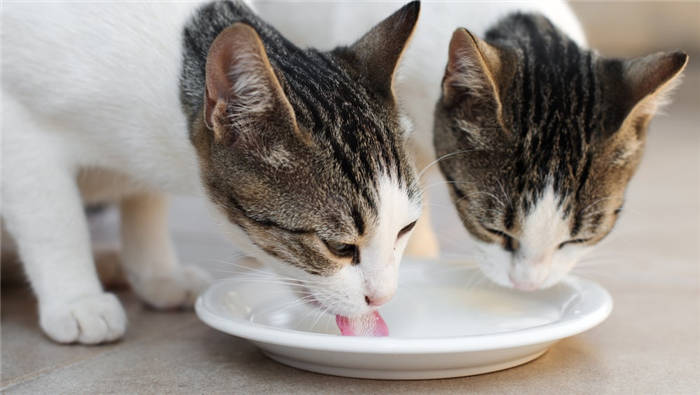
The plague pathogen enters the mouth of a healthy cat with contaminated food or water. It usually occurs when pets eat or drink from the same bowl, lap up from rain puddles, share prey with each other, or come in contact with feces, urine, and vomit of an infected individual.
The mechanism of transmission is similar to any respiratory disease. You can contract distemper by being in the same room with an infected animal. In this case, you do not need to get close to it.


Another way to transmit the virus is direct contact with an infected surface. For example, a bowl, litter tray or toys of an infected individual.
The virus can circulate through the bloodstream, bypassing the placental barrier. Therefore, both adult cats and their future offspring can become infected with distemper. After infection, kittens may be born dead or underdeveloped.
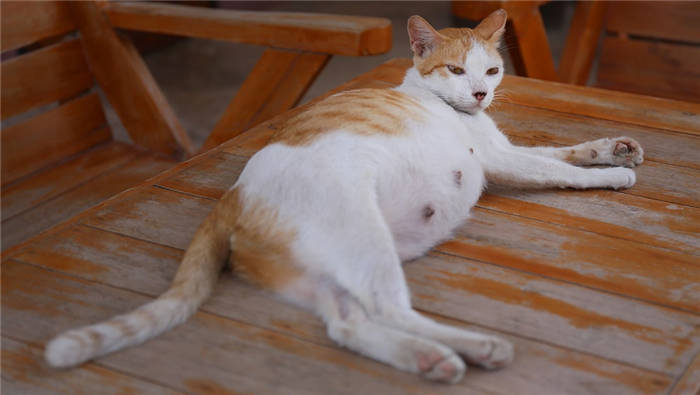

A healthy cat can become infected by the bite of a mosquito, bedbug, flea or tick infected with parvovirus. Infection occurs when the skin is damaged and the parasite's saliva penetrates the wound.
The first symptoms of distemper
The incubation period lasts from 2 days to 2 weeks. After that, the disease can manifest itself with a whole complex of symptoms.
– Lethargy. The cat lies on its stomach with its head thrown back, or sits in one place slightly hunched over. Usually the pet chooses quiet dark corners and refuses to go out to people.
– Decreased appetite. The pet sits in front of a bowl, but does not touch either food or water.
– Vomiting. Vomit becomes yellowish in color, sometimes with an admixture of blood and mucous secretions.
– Bloating of the abdomen. The abdomen becomes painful when palpating: the animal shies away from touch, hisses or starts biting the hand. Attempting to palpate the abdomen may cause vomiting and diarrhea.
– Stool abnormalities. The stools become slimy, foul-smelling and yellowish or golden in color.
– High body temperature. The temperature rises to 40-41 degrees.
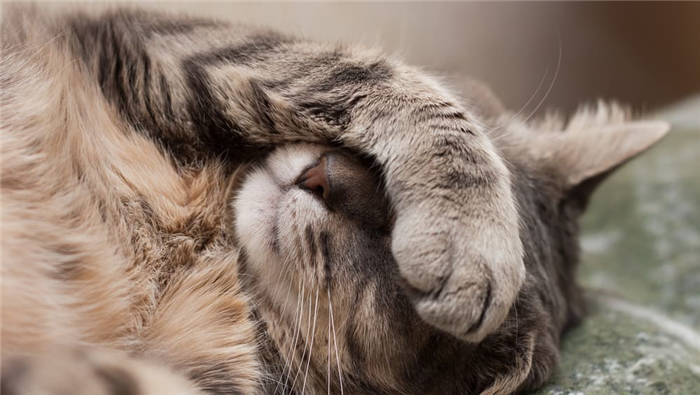
– Emissions from the eyes and nose. The mucous membranes of the eyes and nose turn red and produce yellowish or clear mucus.
– Difficult breathing. Cat breathes like a dog: with its mouth ajar and frequent intermittent breaths.
– Dull coat. The hair looks disheveled and loses its natural shine.
Prevention
The best prevention against plague is considered to be timely vaccination. It allows the cat's body to develop a persistent immunity to the disease. Different vaccines can be used for vaccination, but the following are considered the most popular:
The vaccination is given to kittens at the age of 6-8 weeks. A revaccination is performed after 21-28 days. After that, vaccination of cats and cats is performed once a year throughout life.
In addition to that, it is obligatory to fulfill the sanitary-hygiene requirements when keeping cats and cats – cleaning the room with disinfecting detergents, cleaning and treating the litter box with chlorine, rinsing the bowls.
If all preventive measures are followed correctly, the occurrence of this disease can be avoided. Distemper is considered the most dangerous pathological process in cats, which often leads to the death of the animal. Closely monitor the health of your pet, and if you have the slightest suspicion, go immediately to the veterinary clinic.
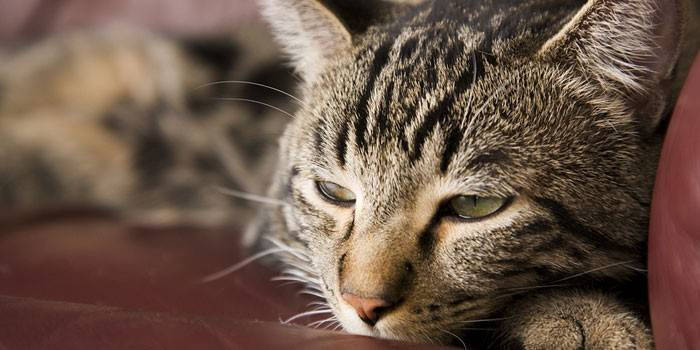
Due to the high volume of questions, free veterinary consultations are temporarily suspended.
Diagnosis of distemper
If there is even the slightest suspicion of distemper, you must immediately take your cat to the clinic. The veterinarian will not only examine the pet, but also send it to be tested. You will need to take blood and feces – the diagnosis is made on the basis of detecting virus particles by PCR. If the cat was vaccinated before the onset of signs of the disease, the test result may be positive.
Treatment of feline distemper includes several tasks: destroy the virus, eliminate intoxication, prevent secondary infection, increase immunity and so on. To combat the virus, such drugs as Vitafel, Fosprenil, Enterostat are used. The regimen of administration is prescribed by the veterinarian.
As a symptomatic treatment of distemper in cats, various drugs are used.
- Sodium chloride. The distemper virus causes severe dehydration and intoxication. The body cannot cope with the toxins on its own. Restore the balance of water, salts, minerals helps intravenous injection of chloride solution.
- As a rule, distemper in cats is accompanied by the accession of a secondary infection. To eliminate it, the veterinarian will prescribe antibacterial agents.
- Diuretic kits. To quickly cope with toxic products of metabolism and remove them from tissues and the body, use decoctions of diuretic herbs and gatherings. In frequent small portions the cat may be given decoctions of cowberries, horsetail, bearberry leaf and others.
- If there is no vomiting, Regidron or Ringer's solution are recommended to normalize the water-mineral balance. The daily amount of the solution is calculated on the basis of the ratio of 5 tbsp. fluid per 1 kg of weight of the animal. Glucose solution and sodium bicarbonate may be added to the diluted preparations (the proportions should be clarified with the veterinarian).
- In case of pain syndrome, spasms in the digestive tract is indicated by taking antispasmodics, such as No-shpa.
- To strengthen metabolic processes, improve immunity, stimulate the body to recover will help Catosal. It should be administered within 7 days.
- The treatment complex also includes vitamin supplements, especially antioxidants A and C, B vitamins. It is desirable to combine their intake with preparations containing iron, such as Ferrodextran.
Care at home
Proper care at home for a cat with distemper increases the likelihood of a successful recovery. If possible, it is better to give shots by calling the doctor at home, as any stress can negatively affect the condition of the animal. If you have to visit the clinic daily, it is better to make a basket for transportation (for example, from a cardboard box), so that you can burn it later.
The room where the cat is should be warm and dry with no wind blowing through. Since the virus also affects the nervous system, you need to provide the pet with peace and shade from bright light.
Drink both plain water (boiled) and decoctions of medicinal herbs. Their choice should be coordinated with the veterinarian, because some drugs and plant extracts may be incompatible. Feed the pet little by little, in the beginning of treatment – only broths, gradually adding to them porridges and ground meat. It is recommended to keep the diet until full recovery.
It is allowed to give enemas to the cat upon agreement with the doctor. They may include preparations on a herbal basis, decoctions, antiseptics. The litter box and bowls should be placed near the pet, and the bedding should be changed daily. Washing the pet during the disease is not recommended.
Diagnosis
Panleukopenia is a very dangerous disease, so the main thing to do when the first symptoms appear is to show the animal to the veterinarian. To make a diagnosis, the attending physicians first examine and listen to the four-legged patients, and then ask the owners about when the first symptoms of feline distemper appeared.
After analyzing the data obtained, the animals are prescribed a set of tests.
Diagnostic methods
To understand whether the cat has the pathogen of panleukopenia in its body, blood and feces are taken for examination. To detect the virus, the following diagnostic methods are used:
Note. PCR testing can be positive in recently vaccinated animals. Therefore, be sure to clarify how long ago the cat was vaccinated.
Differential diagnoses
For effective treatment of feline distemper, it is important to make the correct diagnosis. Since panleukopenia has symptoms characteristic of many diseases, the first thing to exclude:
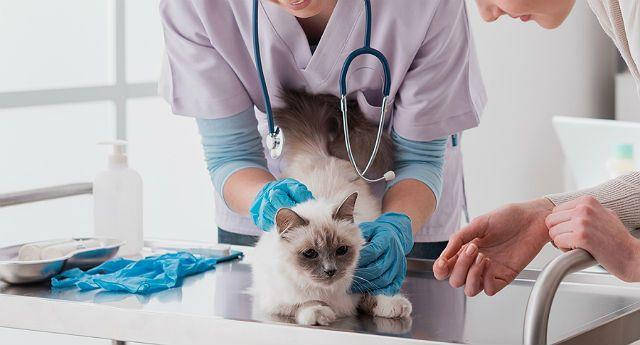
Treatment and prognosis
Treatment of feline distemper should be comprehensive with the use of etiotropic agents to kill the virus and drugs that arrest the main symptoms. Usually to cure panleukopenia, animals are prescribed such drugs:
- Fosprenil. The antiviral drug is used to destroy pathogens and is administered intramuscularly for 14 days. In the early stages of the disease it is used daily for 4 times a day in a dosage of 0.2 ml of solution for kittens weighing up to 1 kg and 0.5 ml for cats weighing 1-5 kg. Gradually the number of injections is reduced to once a day.
- Ringer, Regidron. Rehydrating preparations for elimination of signs of dehydration and normalization of electrolyte balance. They are diluted with glucose and given to cats at the rate of 50 ml per 1 kg of weight.
- No-shpa, Dibasol. Analgesic drugs that effectively relieve pain syndrome and relieve spasms. Used in the form of injections in strict accordance with the instructions of the veterinarian.
- Ticarcillin, Cephalosporin, Ampicillin. Antibiotics that kill secondary bacterial infections. Used in injections strictly as prescribed by the doctor.
- Metaclopromide, Ondanceron, Maropitant are antiemetics. They are used in the form of injections strictly as prescribed by the veterinarian.
- Catosal. A metabolic stimulant normalizes the metabolism and is used only on the recommendation of a specialist.
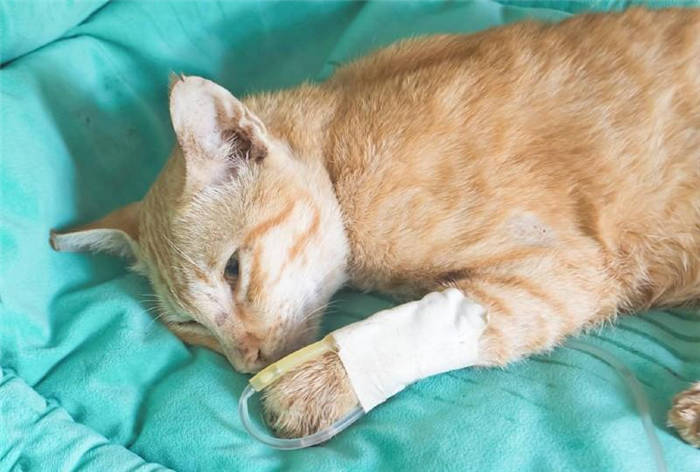
In addition to drugs, treatment of a cat at home should include the use of iron-containing drugs and vitamin complexes that contain folic acid.
Important! Although experts strongly discourage the practice of treating cats with vodka, there are cases where animals have survived after such therapy. True, we can not say that the cause of recovery was the use of alcohol, and not the strong immunity of the pets.
Caring for the cat during the illness
Proper care for a sick animal contributes to a speedy recovery:
- The cat should be surrounded by love and care.
- The cat should be placed in a warm, dry, darkened, but regularly ventilated place.
- Disinfecting the cat's sleeping area every 2 days is recommended.
- Do not force feed or water the pet. This will only worsen the course of the disease.
- It is better to give the cat only lukewarm boiled water to drink.
- All pet feces should be removed immediately and the litter box should be treated with disinfectants.
- The eyes, nose and muzzle of the pet should be cleaned regularly from accumulated dirt.
- The room should be cleaned with regular wet mopping.
- It is strictly forbidden to let the pet outside.
- It is important to adhere to the treatment plan. Do not arbitrarily use folk remedies and alcohol.
- In the first days after the start of treatment, it is recommended to feed the pet with dairy products and meat broths. Then introduce a thoroughly shredded boiled beef and boneless sea fish into the diet. Such a diet should be followed for 3-4 weeks. If the animal eats ready-made food, during the treatment period it is necessary to transfer it to a special food for cats with digestive problems.
Prevention of the disease
Preventive measures are a number of rules that must be followed:
- Annual vaccination. This preventive measure is considered the most effective. The vaccine develops persistent immunity to the disease in cats. The first vaccination is given to kittens at 6-8 weeks, revaccination after 3-4 weeks. Vaccinate the cat annually with a complete vaccine against distemper and other viral diseases.
- Regular examinations of the cat by the veterinarian.
- Purchase a new pet only from proven breeders.
- Observance of hygiene rules. Regular cleaning of the cats' living quarters and treatment of their litter trays, bowls and bedding with disinfectants will prevent the spread of the virus.
- Obligatory isolation of an infected individual from other cats.
- Restricting pets' access to outdoor shoes.
- Minimizing contact between domestic cats and stray animals.
- Regular treatment for external parasites.
Important: Vaccinating immunocompromised cats is strictly forbidden. It may cause infection.
Panleukopenia is one of the most contagious diseases of cats. Most cases of the disease are fatal. Careful observation of your pet's health will allow you to notice the first signs of illness and may save your cat's life. And following feline distemper prevention guidelines will help avoid infection.
💡 And we remind you that on Veterinarian Online you can get urgent vet consultation at any time and in any convenient for you way: via chat, messaging or phone. The cost of the service is 399 rubles. Click here>>.

